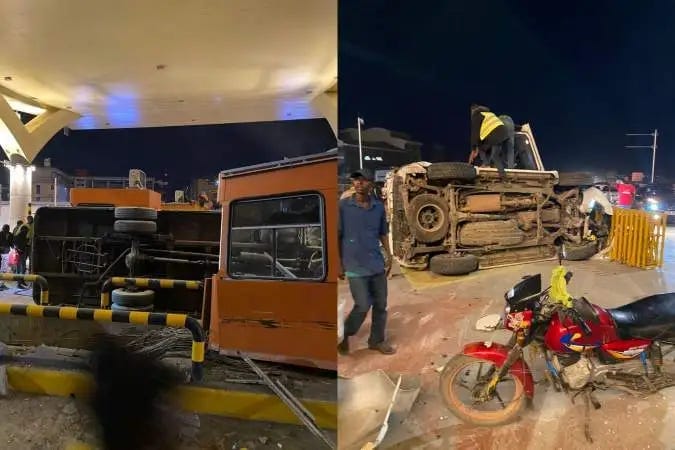What Should be done about the Nairobi Expressway Matatu Accidents?
A huge issue that has emerged with the new Nairobi Expressway is that its inlets or in-flows are becoming chokepoints, leaving people in traffic in danger of tailgating which could lead to knock-on accidents.

The Nairobi Expressway was from its inception conceptualized as a way to cut the commute and speed up travel within Nairobi City. However, it turns out to be inherently flawed, especially in its in-flows. Since being opened up a few weeks back, there have been at least three accidents on the entries and exits of the Expressway, involving Public Service Vehicles (PSVs) or ‘Matatus’. The question is: what should be done about the Nairobi Expressway Matatu accidents?
A Temporary Block on Matatus
As much as we’d hate to think that the Expressway should be reserved for personal vehicles only, there is cause for there to be a temporary block or ban on matatus on the new Expressway; as a way to allow for time for deliberation on what the best solution is. The thing is that Matatus are driven in a way to beat traffic and will mostly skirt the roads on the sidelines and sometimes evade the roads altogether.
The Matatu economy especially in Nairobi is highly fast-paced and especially when it is rush hour, Matatus will do all they can to get to their destination faster and catch another wave of travelers. This culture and nature of getting there fast and doing it faster than everybody else, whatever the cost, is what is causing problems with PSVs at the entry points of the Expressway. There should also be a debate on whether Matatus should be let on to the Expressway at all, or without speed governors.
In-Flows to the Nairobi Expressway should be Fed by Dedicated Roads
A huge issue that has emerged with the new Nairobi Expressway is that its inlets or in-flows are becoming chokepoints, leaving people in traffic in danger of tailgating which could lead to knock-on accidents. Any major road that separates itself from any other for a specific purpose, be it a weighbridge, a border point, or even a toll station, as in the case of the Expressway, should be fed by its own dedicated road. An excellent example of this is the Ruiru Weighbridge.
The Ruiru Weighbridge Example
At the Ruiru weighbridge, vehicles that are to be weighed separate themselves from the traffic and have a lane/road on the side where they will wait for their turn to be served. Beyond that, these dedicated lanes will have a separate inlet to dissuade normal traffic from getting on if they are not to be weighed.
There is also sufficient space for redundancies such as when a vehicle wrongfully gets onto the to-be-weighed lane or when the traffic is jammed and there needs to be space for adjustments. In-flows at the Nairobi Expressway should, therefore, first be fed by dedicated roads or lanes and second, be allotted with enough space for quick adjustments as per the traffic levels and the needs of the road at any point in time.
No Wiggle Room on the Nairobi Expressway Terminals
It is unfortunate that there lacks even wiggle room for vehicles getting onto the Expressway in case they need to adjust or even turn back if need be. This is especially the case at the terminals via the toll booths and you’ll see a funnel of vehicles there instead of a separate-lane queue, waiting in an orderly fashion. It is essential that space be provided to de-choke these choke points and provide some space and opportunity for adjustments by the vehicles.
The Nairobi Expressway should be Fitted with Auto-Tolling Cameras and Infrastructure
The Nairobi Expressway, like the Standard Gauge Railway, is sub-standard. The contractors did a poor job of adequately planning for and foreseeing bottlenecks. If the Nairobi Expressway’s purpose was to decongest traffic in the city, why then couldn’t the contractors see that having a toll booth on every entry or in-flow would further congest the city?
In modernized highways and terminals, tolling is done autonomously via auto-tolling cameras that capture a card on the divers’ dash. This way, it is much easier for drivers to quickly come onto the toll area and proceed with their journey. What there would then need, in this case, is a small booth way by the sidelines to help any drivers who have a problem scanning their cards. This card would be a smart card also and one that drivers can easily replace if they lose. This is a technology that big car rental companies in the West use and we don’t see why an entire government can’t do the same.
What’s Your Take?
What do you think should be done about the Nairobi Expressway Matatu accidents? Should PSVs be banned from the road entirely? Should the Nairobi Expressway be made better? Let us know in the comments below.





